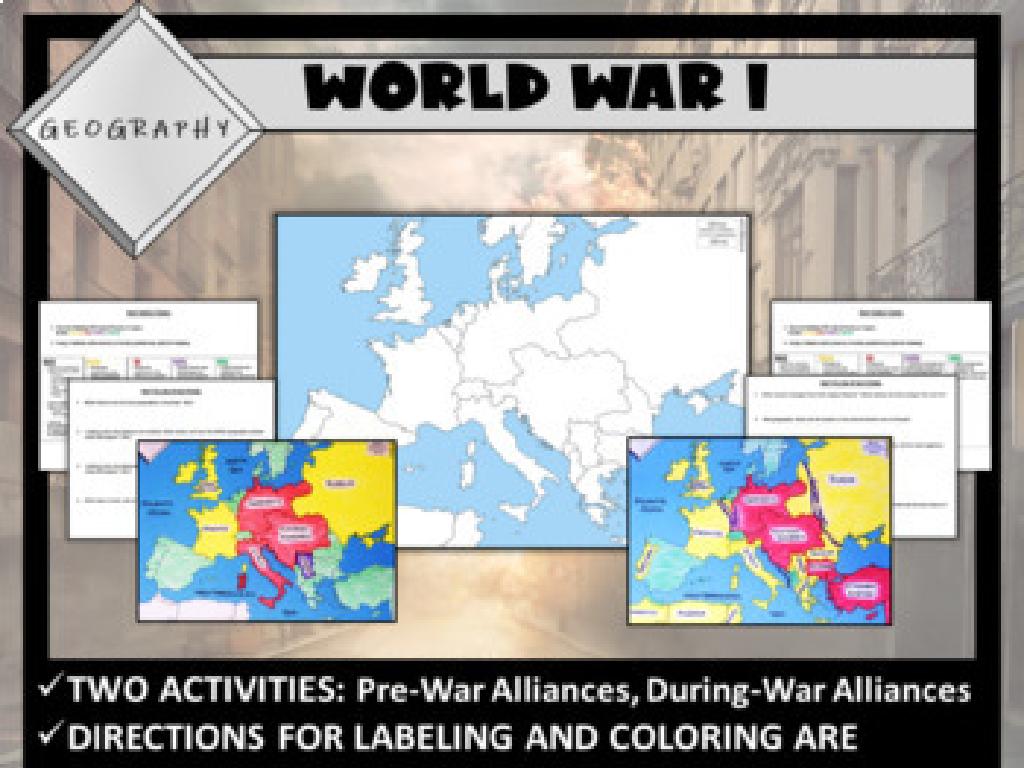Estimate Population Size Using Proportions
Subject: Math
Grade: Eighth grade
Topic: Proportions
Please LOG IN to download the presentation. Access is available to registered users only.
View More Content
Estimating Population Size Using Proportions
– Understanding proportions
– A proportion is an equation stating two ratios are equal.
– Proportions in real life
– Examples: recipes, maps, and model building.
– Estimating populations with proportions
– Use a sample to estimate the total population size.
– Practice with examples
|
Begin by explaining the concept of proportions, which are statements that two ratios or fractions are equal. This foundational knowledge is crucial for understanding how proportions apply to various real-life scenarios, such as cooking, where ingredients are mixed in a certain ratio, or in map reading, where distances are scaled down proportionally. Then, transition to how this concept is used in biology and ecology to estimate population sizes. For instance, scientists may catch, tag, and release a number of animals, then later capture a second sample and count how many are tagged to estimate the total population. Provide practice problems where students can apply proportions to estimate populations, reinforcing their understanding of the concept.
Understanding Ratios: Foundation of Proportions
– Recap on the concept of ratios
– Ratios compare two quantities, like ingredients in a recipe.
– Ratios in everyday life
– Examples: recipes, speed (miles/hour), price rates (cost/item).
– Practice identifying ratios
– Find ratios in the classroom, like student-to-teacher.
– Relate ratios to population estimation
– Understanding ratios is key to estimate populations using proportions.
|
Begin with a brief review of ratios, emphasizing their role as the fundamental elements of proportions. Provide relatable examples such as cooking recipes or speed limits to illustrate ratios in a context familiar to students. Engage the class with an activity to identify ratios in their immediate environment, which could include the number of students to teachers, books to shelves, or windows to doors in the classroom. Highlight the importance of mastering ratios as a precursor to using proportions for estimating population sizes. This will set the stage for applying these concepts to more complex mathematical problems.
Understanding Proportions in Population Estimation
– Define a proportion
– A proportion is an equation stating two ratios are equal.
– Writing proportions correctly
– Use the format a/b = c/d, where a, b, c, and d are numbers.
– Proportion examples
– For instance, 1/2 = 2/4 or 50/100 = 1/2.
– Proportions in population estimation
– Estimate population by comparing a small sample to the whole.
|
Begin with the definition of a proportion, which is a fundamental concept in mathematics, especially when dealing with ratios and comparative quantities. Ensure students understand that a proportion states that two ratios are equivalent. Demonstrate how to write a proportion using the format a/b = c/d, where a, b, c, and d represent numbers, and explain that the cross products must be equal. Provide clear examples to illustrate this concept. Then, connect proportions to real-world applications by explaining how they can be used to estimate population sizes. For example, if 10 out of 100 sampled fish have a tag, one might estimate that 10% of the entire population is tagged. This slide will set the stage for further exploration into using proportions to solve practical problems.
Estimating Population Size with Proportions
– Importance of population estimation
– Helps in resource planning and understanding ecosystems
– Introduction to sampling
– Sampling involves selecting a part of a population to represent the whole
– Estimating with proportions
– Use sample data to predict total population size
– Real-world application
– Example: Estimating the number of fish in a lake
|
Understanding how to estimate population sizes is crucial for effective resource management and ecological studies. Introduce students to the concept of sampling as a practical technique to study populations without a complete count. Explain how proportions can be used to extrapolate the total population size from a sample. For instance, if 10 out of a sample of 100 fish are tagged in a lake, and later 20 out of a sample of 200 fish are tagged, students can use proportions to estimate the total fish population. Encourage students to think of other situations where this method could be applied, such as estimating the number of trees in a forest or the number of students in a school.
Proportions in Action: Estimating Fish Population
– Case study: Fish in a lake
– Imagine estimating how many fish are in a lake without catching them all.
– Set up a proportion from a sample
– If 10 tagged fish are in a sample of 100, what’s the total if 200 are tagged in the lake?
– Solve the proportion for population
– Use cross-multiplication to find the estimated total population.
– Estimate total fish population
– Apply the proportion to estimate the entire fish population in the lake.
|
This slide introduces students to the practical application of proportions in estimating population sizes. Start with a relatable case study, such as estimating the number of fish in a lake, to capture their interest. Explain how a small, tagged sample can help set up a proportion that represents the whole population. Guide students through solving the proportion using cross-multiplication and discuss how this method provides an estimate of the total population. Emphasize the importance of proportions in making informed decisions in various fields such as environmental science and resource management. Encourage students to think critically about the reliability of their estimates and the factors that might affect accuracy.
Estimating Population Size: Practice
– Collaborative problem-solving
– Strategies for solving proportions
– Use cross-multiplication or scale up methods
– Independent or paired practice
– Choose what feels more comfortable for you
– Review and discuss solutions
– Share different approaches and learn from each other
|
This slide is focused on engaging students in active practice of estimating population sizes using proportions. Begin by working through problems as a class to demonstrate problem-solving techniques. Emphasize strategies such as cross-multiplication and scaling up, and discuss when each method is appropriate. Allow students to then work independently or with a partner to solve additional problems, fostering a collaborative learning environment. Conclude with a review session where students can present their solutions and discuss different approaches to the same problem. This will help them understand the concept more deeply and learn various ways to tackle proportion problems.
Class Activity: Estimate Library Books
– Understand the estimation activity
– Collect a sample of books
– Randomly select a shelf and count the books
– Use proportions for estimation
– Apply the sample count to estimate the total
– Discuss estimation results
– Share findings and compare with classmates
|
This activity is designed to apply the concept of proportions to estimate the total number of books in the school library. Students will work in groups to select a random bookshelf and count the number of books on it. They will then use this sample to estimate the total number of books by setting up a proportion with the total number of shelves. After the estimation, students will discuss their findings and methodologies in class, comparing results and understanding the variance in estimations. Possible variations of the activity could include estimating the number of a specific genre of books or comparing the number of books in different sections of the library.
Estimating Population Size: Review & Q&A
– Recap: Estimation using proportions
– Invite student questions
Encourage students to ask about any part of today’s lesson.
– Address confusing points
Clarify concepts like sample size, total population, and proportion.
– Summarize lesson takeaways
|
This slide aims to consolidate the students’ understanding of estimating population size using proportions. Begin by summarizing the key points, such as how to use a sample to estimate the total population and the importance of proportionality. Open the floor to students, encouraging them to ask questions about any aspect of the lesson they found challenging. Be prepared to revisit any concept that seems to have caused confusion, particularly how to determine the sample size and how it relates to the total population estimate. Conclude by summarizing the main takeaways and emphasizing the real-world applications of this method in fields like ecology and public health. This interactive session will help ensure that students are well-prepared to apply these concepts in their future studies.
Homework: Estimating Population Size
– Practice with homework problems
– Find a real-world application
– Example: Estimate the number of trees in a park using a small sample area.
– Utilize available resources
– Textbook, online tutorials, and homework platforms can be helpful.
– Review and seek assistance if needed
– Don’t hesitate to ask for help from teachers or study groups.
|
This homework assignment aims to reinforce the concept of using proportions to estimate population sizes. Students should apply what they’ve learned in class to solve problems from their homework. Encourage them to think creatively and find a real-world application for this method, such as estimating the number of trees in a park or the number of fish in a lake. Remind them of the resources they have at their disposal, including textbooks, online materials, and the ability to reach out for help. Emphasize the importance of reviewing their work and seeking assistance if they encounter difficulties. This will not only help them understand the concept better but also prepare them for more complex applications in the future.






